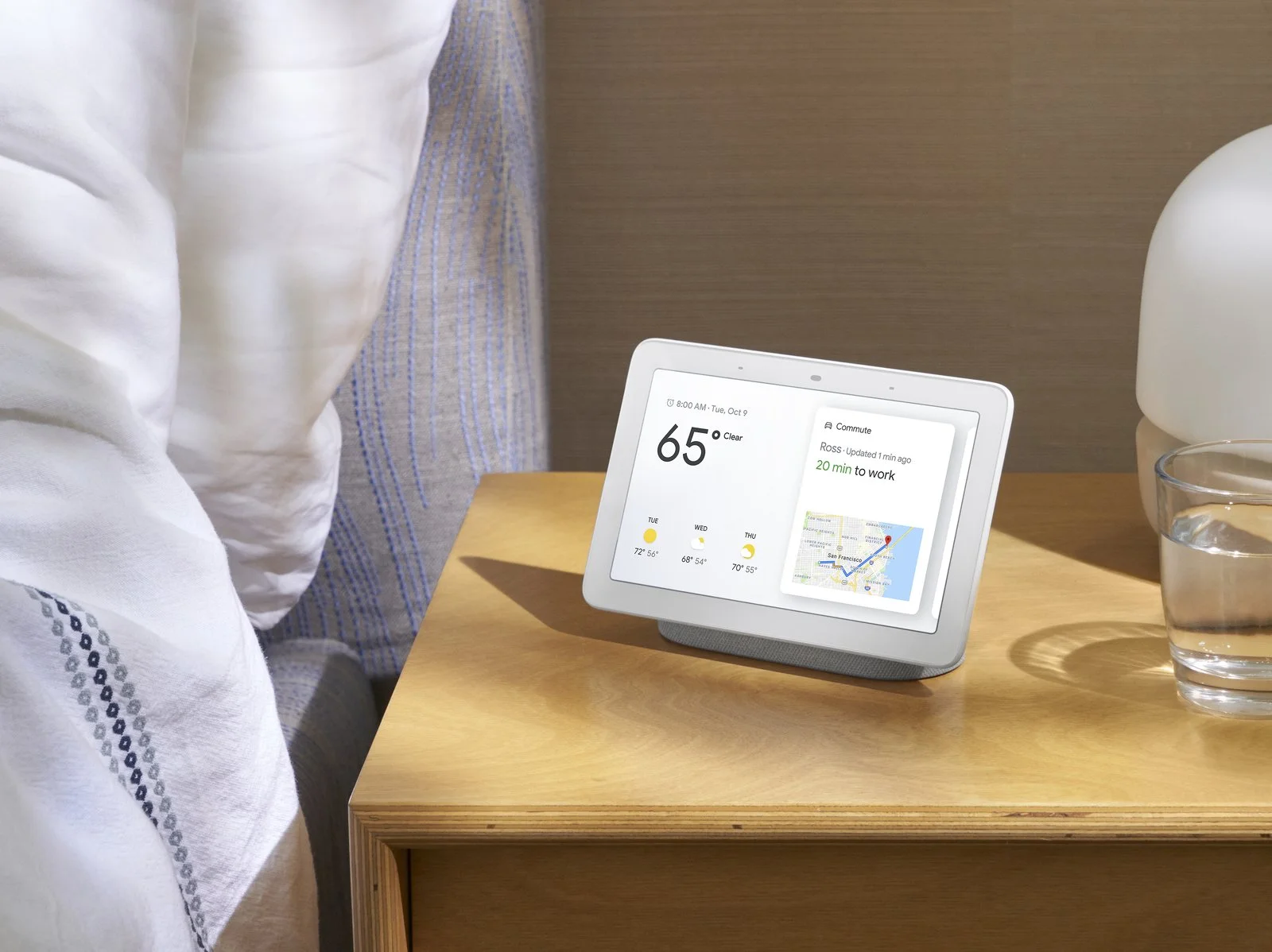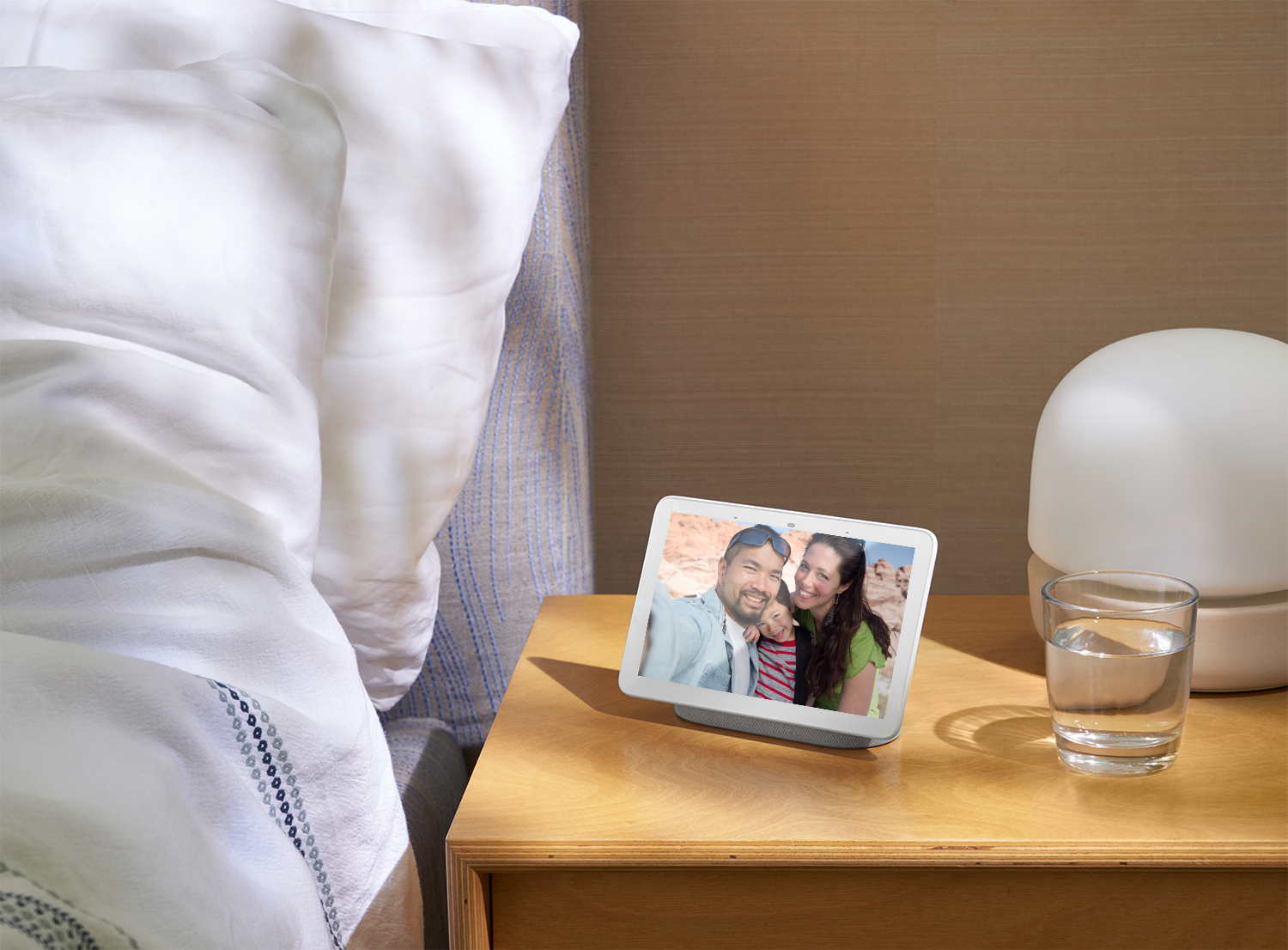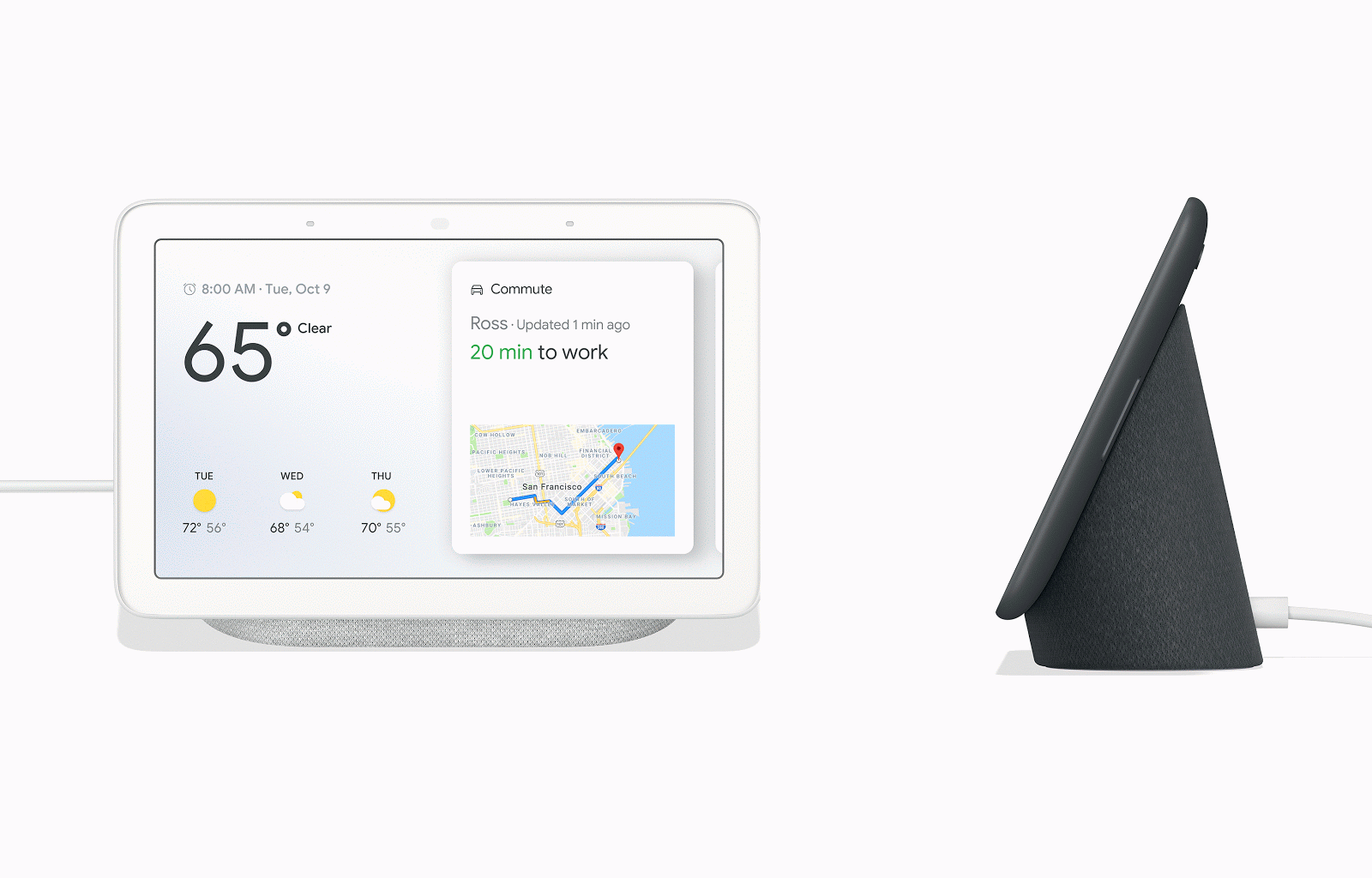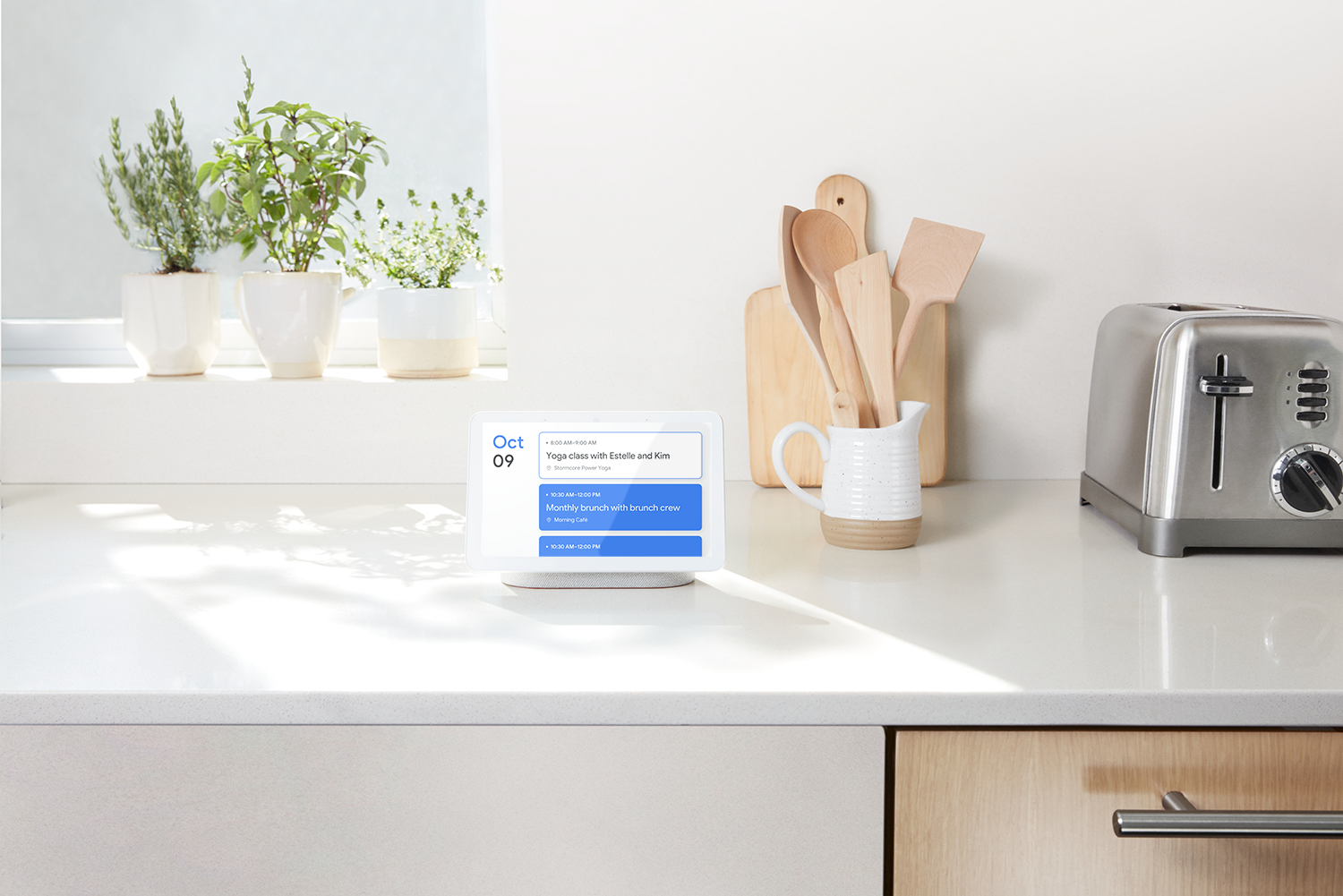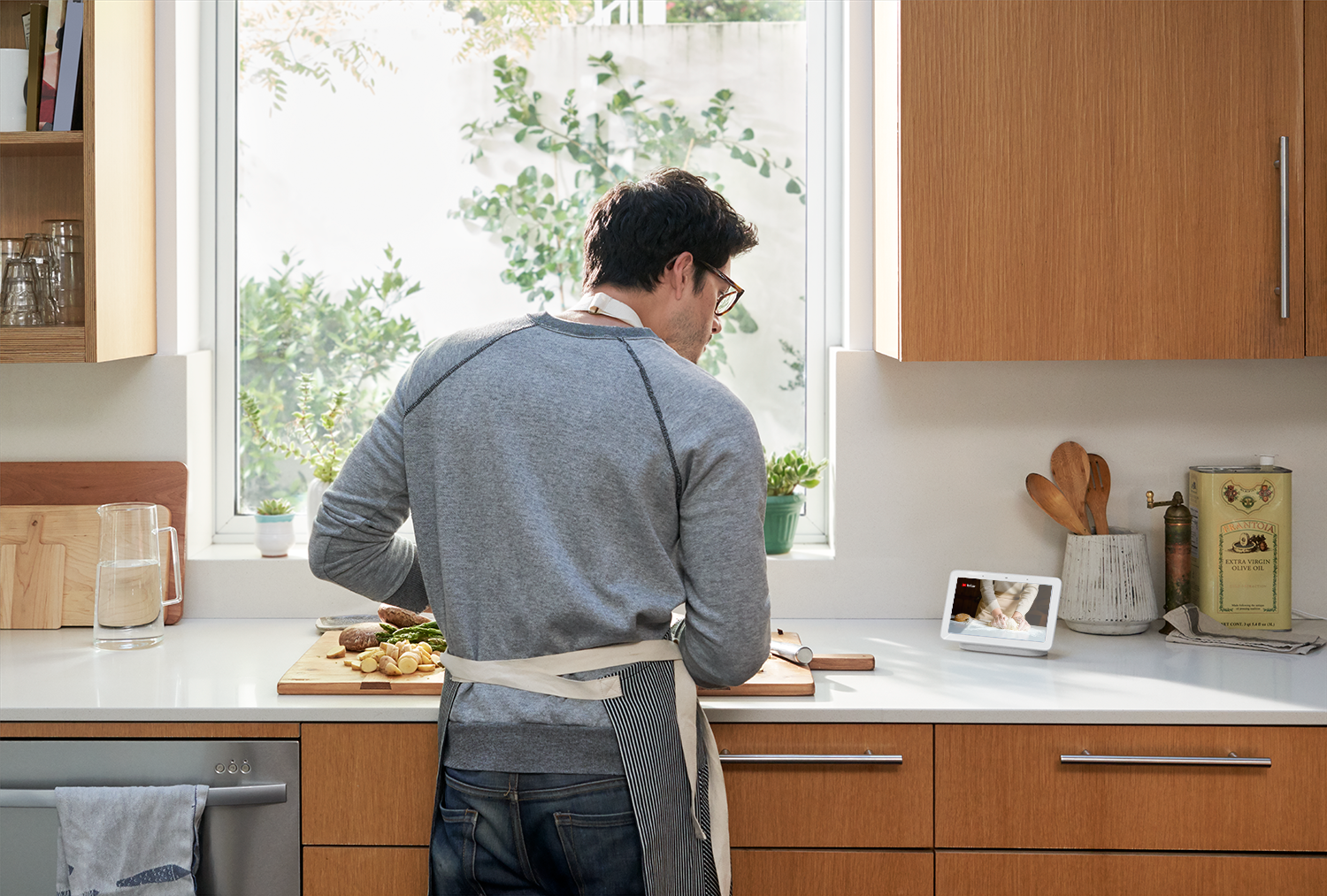Google’s Newest Smart Speaker Boasts a Chameleon-Like Screen
Today, Google announces the newest addition to its home lineup—Google Home Hub. Geared more than ever towards the design lover, it’s the first of the collection to feature a screen that changes to fit its surroundings.
There’s a new movement in the realm of product design, and it’s giving rise to products that solve real-life problems while simultaneously manifesting beauty and joy in a space. Smart devices, which once targeted tech aficionados, now also consider how the user feels; and functional items act as extensions of personal style. Google’s new smart speaker, the Google Home Hub, is a prime example, marrying advanced capabilities with an approachable look that blends into the home.
The mastermind behind the device is Isabelle Olsson, director of design for home, wearables and CMF at Google, whose transformative thinking has redefined the way products are designed and experienced. "If it’s not beautiful, it doesn’t belong in your home," she says. Here, she sits down with us to discuss the Hub and the future of design.
Hub shares the same principles as the rest of the company’s home products, but adds a visual component—this is Google’s first-ever smart speaker with a screen. "It brings to life the notion that the information you need is just a glance away and doesn’t interrupt your daily flow of things," explains Olsson.
Google Home Hub is the company's first-ever smart speaker with a screen. (Courtesy of Google)
Channeling her Swedish heritage, and a culture based on the notion of inclusive design, she hones in on "listening and finding a balance that works for everyone." She brings up the concept of lagom, which translates to a perfect balance. "I’ve taken this idea and applied it to my work as a designer—always striving to find balance of trade offs, inputs, and requirements."
For Hub, this meant making a product that delivers additional value but is small in size, taking up the least amount of space so it fits easily in a kitchen, bathroom, or bedroom in a studio or house—while also being visually pleasing. What makes it truly unique is its ability to automatically detect and match over 16 million combinations of light and color in any room via the Ambient EQ light sensor, so photos on the device blend in with its surrounding decor. It also dims to match darker lighting conditions, so there won’t be a glowing screen in the way of intimate settings or bedtime.
The Google Home Hub screen automatically dims to match environmental lighting conditions. (Courtesy of Google)
The team takes pride in having their finger on the pulse of what’s happening in adjacent industries—particularly decor. Each year they head to the Milan Furniture Fair to spark inspiration. When designing Hub, they worked with materials and colors based on items most people already have at home. A white border around the screen mimics how traditional artwork is framed, and Google Photos automatically adds new images, avoiding duplicates and blurry shots. Live albums can also be shared with loved ones, and you can easily pull up photos from a specific event by asking, "Hey Google, show my pictures from the Grand Canyon."
Hub is available in four context-aware hues including sand, aqua, charcoal, and chalk. "Sand is a warm color that works beautifully with wood surfaces but can be contrasted if placed on a white surface," she explains. "On the other hand, Aqua is a cool color that feels fresh."
Four versatile hues allow the Google Home Hub to blend in or stand out, depending on the consumer's preference. (Courtesy of Google Home)
To make Hub feel more like ornamentation than tech, they tried a variety of different fabrics to find the perfect combination of soft and durable. None of the contenders made the cut in the prototyping stage, so they created their own from scratch. "We tried a variety of different fabrics which all felt too much like we attached upholstery to a piece of tech. We selected this material because it has depth when you look at it close up, but is clean and simple from a far," says Olsson.
It comes as no surprise that they developed at least 2,000 models in the process of creating Hub. From figuring out the right size (seven inches) to prototyping the shape (rectangular with rounded edges) to finding the right visual balance of screen and powerful speaker, every element is intentional. They decided on a floating stand to make it feel light and airy, while also allowing for uninterrupted, clean audio to be ported throughout the front.
A floating stand gives the smart speaker a sense of lightness, while allowing clean audio to be ported throughout the front. (Courtesy of Google)
A natural evolution for the product family, Google’s smart speakers have become a useful addition to the day-to-day, turning lights and televisions on and off, managing thermostats and making calls, and creating an entire morning routine with an alarm, music, and the day’s news and calendar events.
Olsson has taken this to the next level with the addition of visuals. She uses cooking as an example—you’ve just started a recipe and your realize you may have missed something. Hub provides step-by-step instructions and videos while your hands are full. Plus, they've partnered with Tasty so users will have access to fun recipe videos right on Hub. Over 10,000 types of smart home devices spanning more than 1,000 brands can now be controlled in a single dashboard that everyone in the family can see and control. No more switching between apps—just swipe down to reveal your home view.
Hub provides step-by-step instructions and videos while your hands are full. (Courtesy of Google)
Hub is meant to live in your home so seamlessly that you won’t even know it’s there. This, Olsson says, is where the future of technology lies: "[Products] will be created in a thoughtful and beautiful way, encouraging us to place it out in the open, the way we would a vase or other piece of decor."
Google Home Hub will be available for purchase October 22 for $149 at the Google store.
See the story on Dwell.


